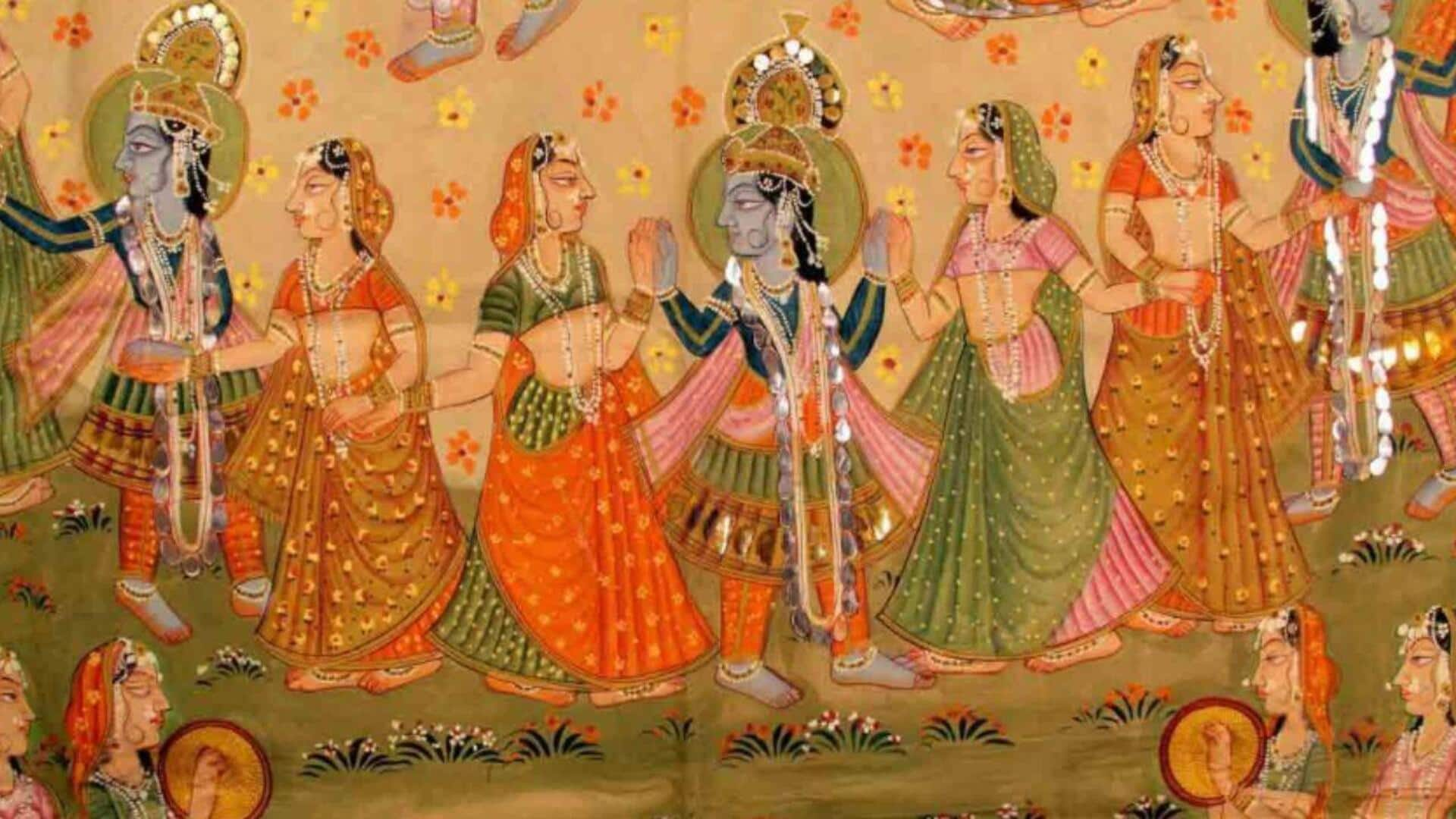
The divine beauty of Pichwai paintings explained
What's the story
Pichwai paintings, a traditional art form from India, are famous for their intricate designs and vibrant colors. These paintings are mostly associated with the temples of Nathdwara in Rajasthan, where they were used to decorate the walls during festivals. The word 'pichwai' means 'hanging at the back', as these artworks were hung behind deities. They depict various themes related to Lord Krishna's life and teachings.
#1
Historical significance of Pichwai
Pichwai paintings date back to the 17th century when they were first created to adorn the walls of temples in Nathdwara. Over time, they became an important part of religious rituals and celebrations. The artists used natural colors made from minerals and plant extracts to make these paintings last long. This practice not only preserved the art form but also ensured its authenticity over generations.
#2
Themes and motifs in Pichwai art
The themes in pichwai art are mostly based on life events, like childhood exploits or divine plays (leelas). Common motifs are peacocks, cows, and lotus flowers, which symbolize different aspects of spirituality and nature. Each painting tells a story or conveys a message that resonates with devotees and art lovers alike.
#3
Techniques used in creating Pichwai
Creating a pichwai painting is no easy task. It requires immense skill and patience. Artists use fine brushes made from squirrel hair to paint intricate details on cloth or silk canvases. The colors are derived from natural sources like turmeric for yellow or indigo for blue shades. This eco-friendly approach adds to the uniqueness of each piece.
#4
Contemporary relevance of Pichwai paintings
In recent years, pichwai paintings have gained popularity beyond religious settings as people appreciate their aesthetic appeal and cultural significance. Modern artists are experimenting with new techniques while preserving traditional methods to keep this art form alive. Exhibitions worldwide showcase these masterpieces, bridging the gap between heritage and contemporary art scenes.